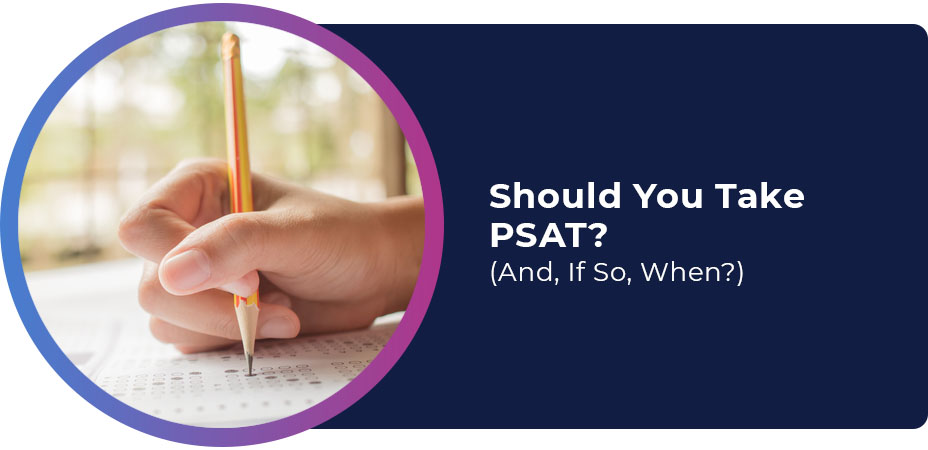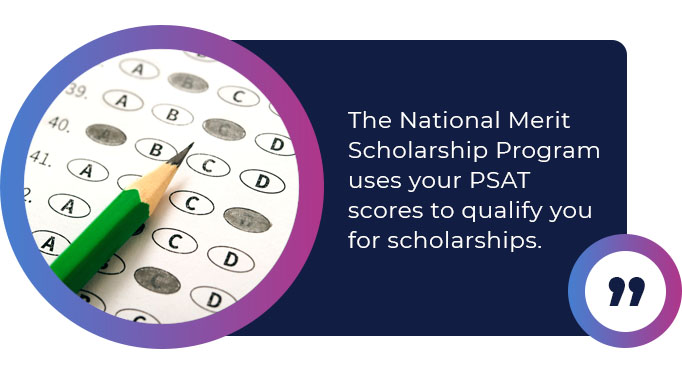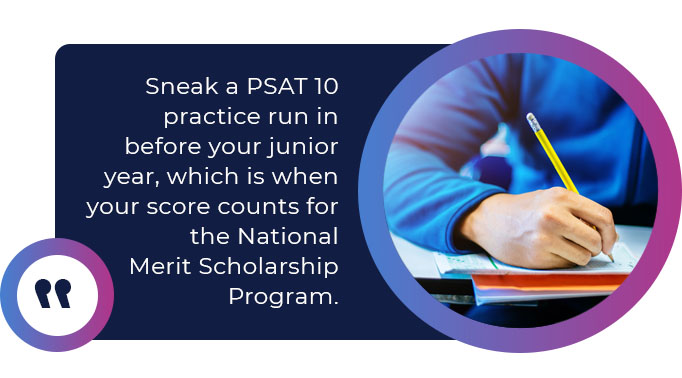Ah, college. The word itself brings thoughts of late-night study sessions, dorm rooms, new friends, and fresh opportunities. Before you can pack your bags and pursue your dreams of higher education, you’ll first need to take one or more college entrance exams like the Scholastic Assessment Test (SAT). But how does one prep for the SAT in the first place? By taking the PSAT, of course.
The PSAT, which stands for “Preliminary SAT,” is essentially a trial run for the SAT. Since the PSAT isn’t strictly necessary to get into college, many students wonder whether they should bother taking it at all. The answer to that is yes, yes — a million times, yes. Hang tight as we explain why and when to take the PSAT.
What Is the PSAT?
The PSAT is a two-hour test that students take once a year in the fall or the spring, depending on the variety of the exam. The PSAT serves as a practice test for the SAT exam and is therefore similar in its structure and content.
There are three varieties of PSAT exams:
- PSAT 8/9 – The first exam is the PSAT 8/9, which eighth- and ninth-grade students take to become familiar with standardized testing.
- PSAT 10 – The second exam is the PSAT 10, which is simply another practice test to prep sophomores for the SAT.
- PSAT/NMSQT – Finally, there is the PSAT/NMSQT, a test that is specifically written with juniors in mind. This one is especially important because its scores can help determine whether you qualify for college scholarships.
The Benefits of Taking the PSAT
While the PSAT is totally optional and won’t influence your college admission, there are several reasons why you should take it anyway:
- You’ll get better at standardized testing. This is a no-brainer. The more you practice the PSAT, the better score you’ll get on the SAT — aka, the one that can get you into your dream college.
- It qualifies you for college scholarships. If you’re applying for college scholarships to pay for your schooling, you’ll definitely want to take the PSAT. The National Merit Scholarship Program uses your PSAT scores to qualify you for scholarships. It also acts as a gateway to a variety of other scholarships from different colleges, so be sure to give it everything you’ve got!
- You’ll find out your strengths and weaknesses. The PSAT can help you identify in which areas of testing you excel, along with the areas could use some improvement. With this information, you can study hard in certain areas to better prepare for the SAT.
- It can help you get placed in AP classes. Advanced Placement (AP) courses allow high school students to take advanced courses that earn college credit. If you score a high PSAT, a teacher might take notice and recommend you for certain AP classes where you’re likely to do well.
- It’s relatively low stakes. Colleges don’t consider PSAT scores for admissions. By taking the PSAT, you can get an honest idea of your potential SAT scores without stressing about not getting into your dream college.
The Drawbacks of Taking the PSAT
Just because you can take the PSAT early doesn’t necessarily mean you should. In fact, there are several drawbacks to taking the test too soon:
- Testing burnout is a real thing. Some students may get burned out if they take the PSAT too early and too often. If you’re a freshman, it may be better to wait until your sophomore year before you hit the books too hard.
- There’s a long wait time for test scores. PSAT scores don’t come out for months after you take the test. By the time you get your results, you may not remember what you did on test day, which can seriously undermine your ability to learn from your mistakes.
- Doing too well on the SAT can trigger red flags. Some students have had their SAT test scores called into question after scoring low on the PSAT and high on the actual SAT. If you’re going to take the PSAT early, be sure to take it seriously from the get-go.
When to Take the PSAT
There is really no right or wrong time to take the PSAT. You need to do what feels best for you and your situation.
For most students, there is little harm in taking the PSAT during their sophomore year. Taking the PSAT 10 can help you sneak in a practice run before your junior year, which is when your score counts for the National Merit Scholarship Program.
If you have severe testing anxiety, talk with your school counselor about it. They may have an alternative solution that will help you reap the benefits of PSAT practice without all the stress that comes with it.
Prepare, Prepare, Prepare
You don’t need to stress yourself out over the PSAT, but at the same time, you should prepare for it as best you can. The Khan Academy is an excellent (and free!) resource you can use to practice for the PSAT/NMSQT. By studying hard now, you can better prepare yourself for the SAT and potentially win some amazing scholarships in the process.









